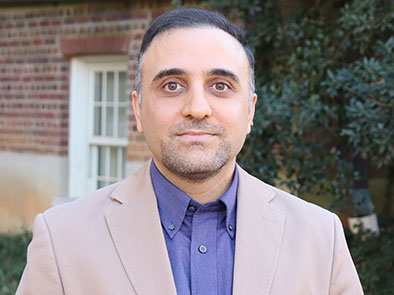Beyond the AI Hype
 Over the past year or so, conversations about artificial intelligence (AI) have ranged from doomsday prophecies to predictions of a miraculous new way of working. Mohammad Hossein Jarrahi is somewhat frustrated with both. He has spent his career researching the use and consequences of emergent digital technologies in shaping the future of work and organizations, aiming to reframe the conversation. Specifically, he has studied AI for seven years.
Over the past year or so, conversations about artificial intelligence (AI) have ranged from doomsday prophecies to predictions of a miraculous new way of working. Mohammad Hossein Jarrahi is somewhat frustrated with both. He has spent his career researching the use and consequences of emergent digital technologies in shaping the future of work and organizations, aiming to reframe the conversation. Specifically, he has studied AI for seven years.
“ChatGPT was a watershed moment because of its consumerization — it brought AI into the hands of billions of people quickly. This piqued interest and experimentation.” However, Jarrahi says, “The rate of change in actual business and practices is slower than the rate of change of these technologies…. and I see an evolution, not a revolution, here.”
Jarrahi believes there could be an AI winter, where people come in with unrealistic expectations that are not met, leading to a decline in interest in the technology.
“The biggest thing is how far away from the hype the real practices of users look like on the ground. AI can improve things in information search and retrieval in specific tasks, but integration in real-world practice is fraught with important challenges.”
He encourages businesses and individuals to consider a different and more realistic way of thinking about AI – as a human-AI symbiosis.
“AI systems are rising to levels of partners, not competitors or replacements. They can delve deep or augment work, but that can’t replace us.”
Jarrahi believes the key is a systematic approach to mapping out work processes and determining what tasks are best done by humans and which are best done by AI systems. His work has been published in Financial Times, the Harvard Business Review, and the MIT Sloan Management Review.
Along with his research partners, Jarrahi has written about the skillsets that are unique to humans and cannot be accomplished with AI, such as emotional intelligence, holistic and strategic thinking, creativity, critical thinking, and ethical thinking. They’ve also outlined skills that humans will need to work more effectively with AI. These include AI literacy, data-centric skills, and algorithmic communication.
Integrating AI into workflows and systems will present unique challenges. Since AI systems train on past data, they can produce results that have biases based on race or gender. There can also be the issue of automation bias. Managers may put too much trust in the results generated without understanding what data was used or how results were produced.
Jarrahi compares this to the issue of automated car crashes. If the human partner isn’t vigilant, they may be headed for disaster.
“We look at issues like the problem of hallucination (where an AI system makes up incorrect or misleading information). It should diminish, but it’s an inherent problem with these systems. They make questionable assumptions and bias inferences. This brings me back to the human in the loop and the concept of division and partnership.”
Jarrahi’s research helps him consult businesses on how to integrate AI tools. His research also enables him to incorporate numerous workplace examples into his teaching, thereby helping students gain insights that will be relevant to their careers. He has found that many students are excited about AI.
“To some extent, it comes naturally to them. They interact with algorithms daily. We as faculty provide a comprehensive understanding of AI. It’s not just about development, ethics, efficiency, or impacts – it’s about all of them.”
Jarrahi said the key to that work is interdisciplinary research, a key part of the SILS culture.
“Through interdisciplinary collaboration, you get the different pieces, and you can put them together. Deep learning experts and sociologists, have different pieces. When you get them together, that’s a reflection of the future.”
“The future of tech in the workplace isn’t going to be a completely different picture than today, it’s about how these things come together. All of my research is what the partnership looks like, and how can we – that has to be the normative assumption–how can we move forward.”
Jarrahi thinks that the students in his classes will have very different future careers, because the rate of change has become so rapid.
“I tell students their competitive advantage lies in continual learning, and some of that learning is going to come from machines. It’s not going to be a revolution in the sense that everyone is going to be out of a job. It’s an evolution.”
Read Jarrahi’s Recent Publications:
How will artificial intelligence change the value of human skillsets?, Interview with Financial Times
What Will Working with AI Really Require?, Harvard Business Review
Algorithmic Management: The Role of AI in Managing Workforces, MIT Sloan Management Review
Two articles on the concept of human-AI symbiosis won the Best Article of the Year awards in the Journal of Business Horizons in 2018 and 2023, respectively:
Artificial Intelligence and the Future of Work: Human-AI Symbiosis in Organizational Decision Making
Artificial intelligence and knowledge management: A partnership between human and AI
Related Research Areas: Information Interaction and Retrieval
Related Programs: Master of Science in Information Science (MSIS)
